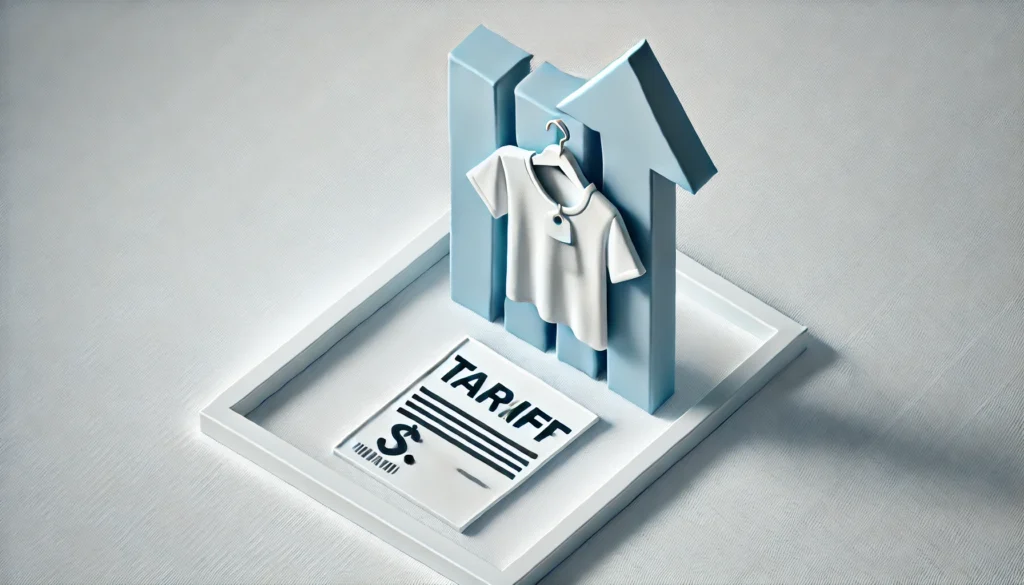The new tariffs announced by the U.S. government are poised to reshape the retail, fashion, and apparel sectors. As global supply chains face renewed scrutiny and operational challenges, it is critical for brands to understand what these tariffs mean and how they can strategically navigate the shifting landscape. In this piece, we dive into the key details of the tariffs, their potential impact, and provide actionable tips to help your business stay resilient.
Understanding the New U.S. Tariffs
The recent U.S. tariffs aim to address a range of economic and policy objectives by targeting imported goods that have long underpinned the retail and apparel supply chain. Here’s what you need to know:
Scope and Structure
- Additional Costs: Tariffs impose extra costs on imported materials and finished goods, calculated as a percentage of the import value. This can drive up expenses for brands relying on these imports.
- Illustrative Example: For instance, a 10% tariff on $100,000 worth of imports results in an additional cost of $10,000, impacting pricing and profit margins.
Policy Rationale
- Domestic Protection: While the tariffs are designed to protect domestic industries and encourage local production, they also disrupt established global sourcing practices, posing significant short-term challenges for international supply chains.
Immediate Implications
- Urgency for Compliance: Brands must quickly reassess their compliance requirements, update cost structures, and explore alternative sourcing strategies to minimize disruptions.
What Retail Brands Should Know About the Tariffs
Understanding the practical implications of these tariffs is essential for retail, fashion, and apparel brands:
Compliance and Documentation
- Key Actions: Ensure that all imported goods are correctly documented and classified under the new regulations. This may involve updating compliance processes and staying current with evolving guidelines to avoid penalties and delays.
Cost Calculations
- Impact on Pricing: Since tariffs are based on the declared value of goods, even minor miscalculations can have significant financial implications. It is critical to closely monitor these costs and adjust retail pricing strategies accordingly.
Supply Chain Vulnerabilities
- Country-Specific Risks: A major sourcing hubs—such as China—may experience shifts in cost dynamics. Brands should evaluate their reliance on any single source and consider alternative suppliers if necessary.
The Impact of Tariffs on Retail Brands
The new tariffs will affect various aspects of your business:
Rising Product Costs
- Direct Financial Impact: Higher tariffs mean increased costs for raw materials and finished goods. Unless these costs are passed on to consumers or offset through cost-saving measures, profit margins may be squeezed.
Operational Disruptions
- Supply Chain Challenges: Potential delays and fluctuations in supply chains require robust inventory management and diversification of sourcing strategies to ensure smooth operations.
Competitive Market Shifts
- Evolving Dynamics: As tariffs alter cost structures, competitive dynamics will shift. Brands that adapt quickly to pricing changes and supply chain challenges are more likely to maintain or grow their market share.
Sourcing Analysis by Country
- Data-Driven Decisions: For example, if your sourcing data shows that significant materials are imported from China, that as of this writing, will continue to face higher tariffs for goods imported into the U.S., it’s essential to compare tariff rates from other countries. This insight can inform decisions on whether to diversify sourcing or renegotiate existing terms.
Tariff Challenges: Risks, Rewards, and Strategic Responses
In light of the new tariffs, consider these strategic actions to mitigate their impact:
- Diversify Supply Chains: Reduce reliance on countries facing high tariffs by exploring alternative sourcing options. Diversifying suppliers can help mitigate risks associated with tariff fluctuations, even if shifting production is complex.
- Enhance Supply Chain Visibility: Implement technologies that offer real-time insights into your supply chain. This enhanced visibility allows for proactive adjustments and improves responsiveness to potential disruptions.
- Review and Negotiate Contracts: Reassess existing agreements with suppliers and customers to determine how tariff costs are allocated. Renegotiating contract terms can help distribute financial burdens more equitably.
- Optimize Product Assortment: Analyze your product mix to focus on items less affected by tariffs or those with higher profit margins. Strategic adjustments in product assortment can help maintain overall profitability despite increased costs.
- Leverage Technology for Collaboration: Utilize platforms that facilitate real-time collaboration among design, merchandising, and supply chain teams. This integration ensures swift decision-making and reduces costly errors.
- Stay Informed on Trade Policies: Regularly monitor trade regulations and tariff updates to anticipate changes. Proactive awareness can provide a competitive edge by enabling timely strategic adjustments.
Tariff Mitigation: How VibeIQ Can Assist Retail Brands
VibeIQ’s assortment lifecycle platform can help brands and retailers navigate the challenges posed by tariffs. Here’s how our solution enhances your strategic response:
Real-Time Data and Collaboration
- Centralized Platform: VibeIQ provides a centralized space where go-to-market teams can collaborate using up-to-date product data and visuals. This real-time interaction allows for quick adjustments to product assortments in response to tariff impacts, ultimately reducing time to market and improving decision-making.
Creating an Optimized Product Assortment
- Seamless Integration: Our platform can integrate and centralize data from other tools (PLM, ERP, consumer sentiment, e-commerce, BI, PIM, DAM, etc.). These integrations, achieved through robust APIs and unified dashboards, enable comprehensive analysis and adjustment of product mixes to focus on items less affected by tariffs or those capable of maintaining profitability despite increased costs.
- Strategic Benefit: This enhanced planning supports better margin retention and sell-through rates, helping brands adapt to a shifting tariff landscape.
Strategies for Retail Brands to Overcome 2025 U.S. Tariff Challenges
This situation is complex, and every brand is navigating it differently. If you’re unsure how these changes will impact your business—or what levers you can pull to adapt—let’s talk.
We’re here to help. Not with a generic pitch, but with a real, personalized conversation about your business, your challenges, and how VibeIQ can support your team where it matters most.



